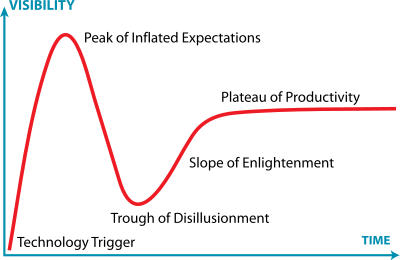Yesterday I had an interesting discussion with a teammate who recently attended a course on Emotional Intelligence. He asked me if I had read about Emotional Intelligence. I said no, but this turned out to not be true. In 2009, I read Emotional Intelligence 2.0. I gave it 5 stars and called it a very accessible soft skills book. I even took the online rating test. At least my review says my self of 7 years ago found it interesting.
Changes in 7 years
Since I have no memory whatsoever of this, I took the test again today. Luckily, the book contains a passcode so I could see my old and new scores. I found my scores interesting. In particular, I think I rated myself lower BECAUSE I have more awareness of these things now than I did when I first read about the topic. Meaning I’m more aware of my weaknesses. In 2009, I wasn’t even particularly interested in the topic. I just got a free book at JavaRanch in exchange for writing a review. I’ve done a lot of things in this space since so I know I’m stronger now than in 2009! All that said, they recommend re-taking the test after 6-12 months, not after 7 years.
| Category | Change | Comment |
|---|---|---|
| Self Awareness | Exactly the same | Weird! Wonder what are the odds of an exact same score. |
| Self Management | Scored 10 points lower | I definitely think knowing more affected my score. Because knowing what I’m feeling means I’m conscious of the small percent of the time where I let a reaction through that I didn’t want to even if it wouldn’t be observable to others. |
| Social Awareness | Scored 10 points lower | Knowing more definitely affected this category too. I immediately think of the Dunning–Kruger effect here. Seven years ago, I had so much less social awareness than I do know that I would have rated myself higher because of lack of awareness of what I missed. |
| Relationship Management | Scored 6 points higher | While I think I’ve always done things in this space, I’m more conscious of it right now because of the conversation I had yesterday that inspired this post. (more on this below) |
Small Concrete Things
Flipping through the book, I should read it again. I really liked that it was lots of small concrete things to try. Rather than theory or vague statements like “try to understand people.” I should re-read it cover to cover again too.
Over time, I’ve mentioned some of the things I do without realizing they are related to emotional intelligence. A few examples:
- Talk to at least three people I don’t know at a work reception (I do this because it is easier to stay with the people you know and this forces me to counter natural introversion and actually build my network. It also gets me away from my team to talk to the people I see less often.)
- Introduce myself to anyone I don’t know on the floor. (Again counters feelings of being introverted)
- Know in advance external forces will affect my emotions, so I can compensate in various ways. (Obviously you can’t always know in advance, but many things are known before work starts).
My mental model
“Dealing with people and feelings” stuff has never come naturally to me. So while I’ve tried to work on these compensating techniques, I’ve never felt good at it nor do I expect I’ll ever feel good at it. And that’s ok. I’m great at tech stuff and explaining things and mentoring people and many other things. And yes, I realize the oxymoron in there – mentoring people is part of “dealing with people.”
Also, continuous improvement is important. Time management is a soft skill I’m excellent at and do feel strong at. But I still spend time getting even better in that space. So I recognize that as long as my awareness of “dealing with people and feelings” grows at the same rate or faster than my mastery of the techniques I want to do, I’ll keep getting better without every actually feeling good at it.
Because “dealing with people and feelings” doesn’t come naturally I try to algorithim-ize it. If I can identify something I want to do that is concrete enough, I can consciously practice it until I can do it without thinking about it. The tricky part is identifying those things. (Which is one of the reasons the book is a good format for me – it is about specific things.)
The conversation that inspired this post
Anyway, finishing up, I IMd my teammate after we talked:
sharing: i can’t believe you had so many examples of me being effective in the space of communication/reflection/stuff from your class. i feel so weak at it. i think b/c none of it comes naturally
And he replied:
Understood. I think it’s the more remarkable because of that.
And you invest in it, because you value it. You could just be satisfied with “being bad at it.
His quote is great. I do value it. I also value continuous improvement in technical stills, soft skills and process. Whether it is something where I feel good, bad or medium, anything can get better. So I asked if I could use that IM quote in a public blog post and he said yes.


